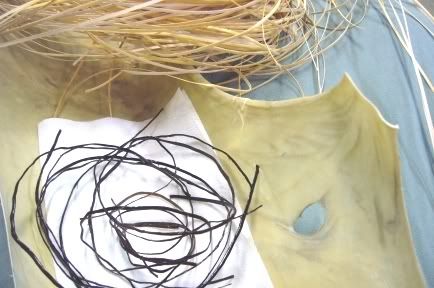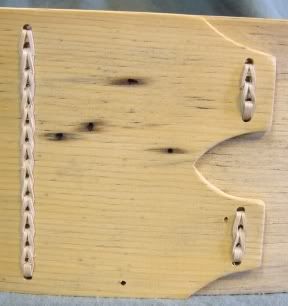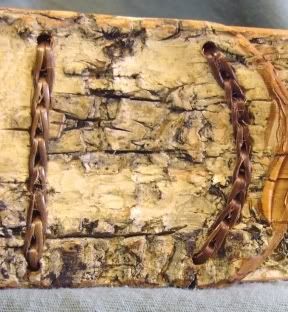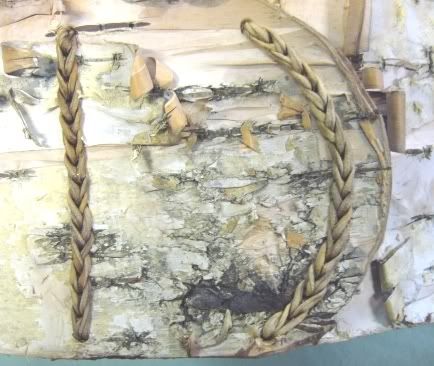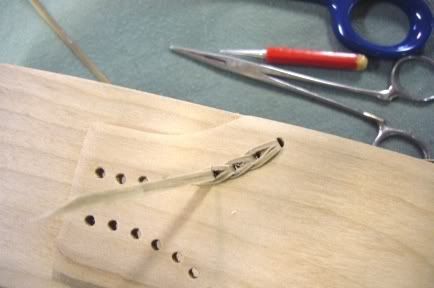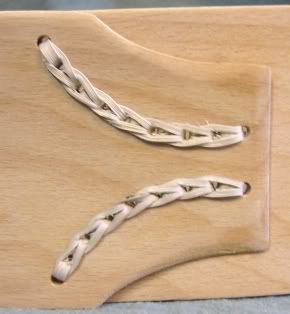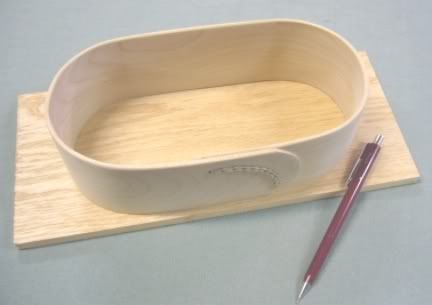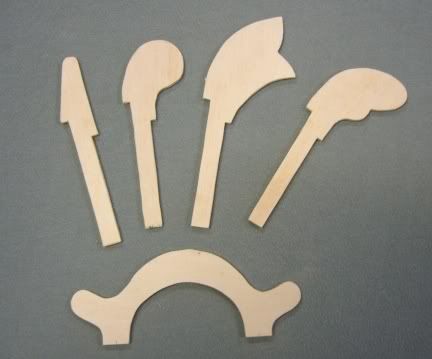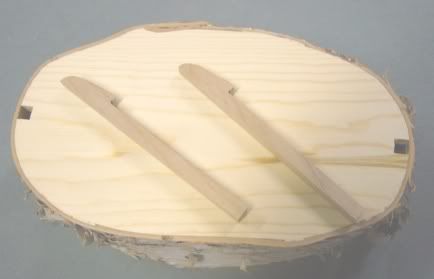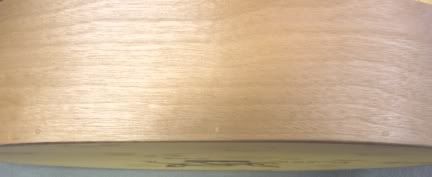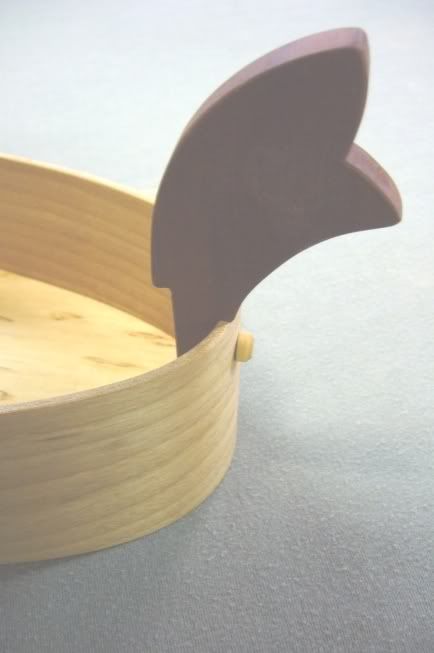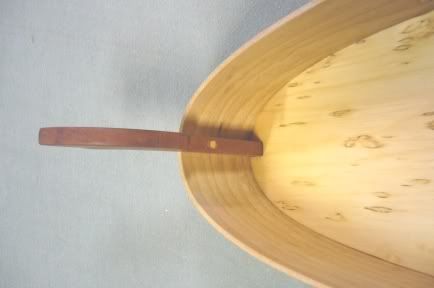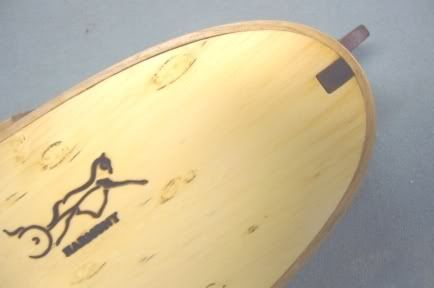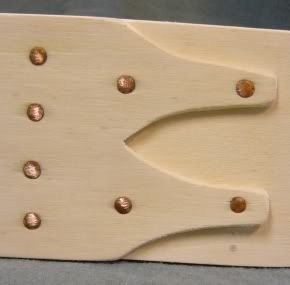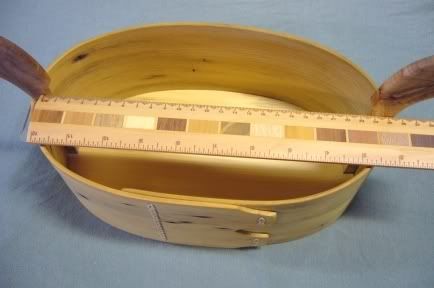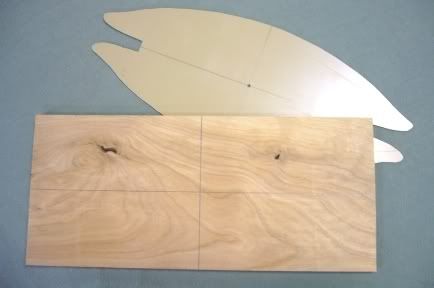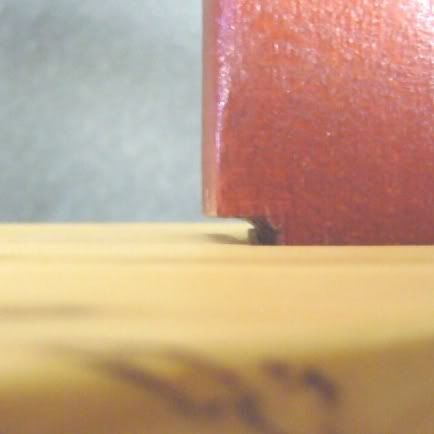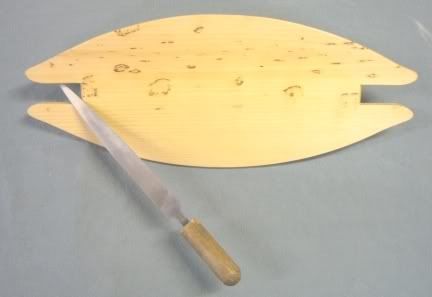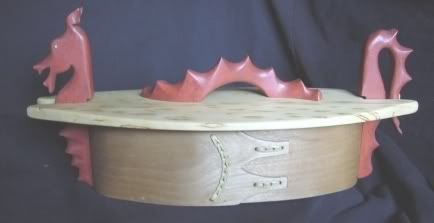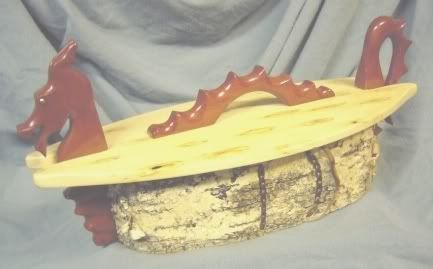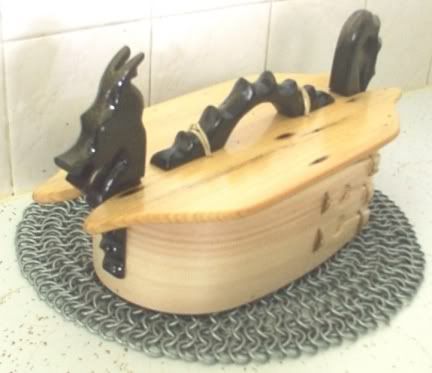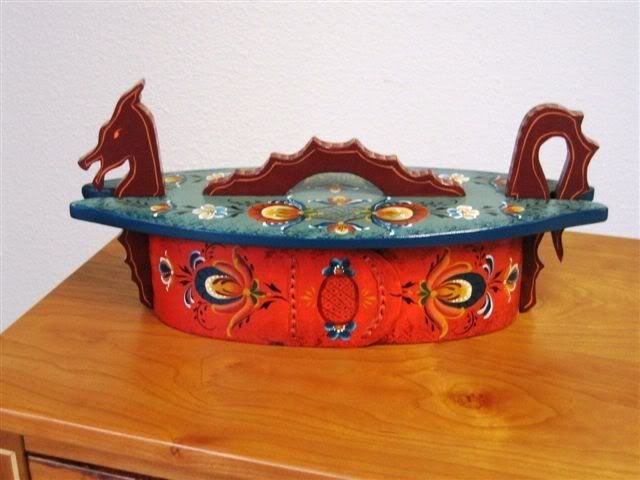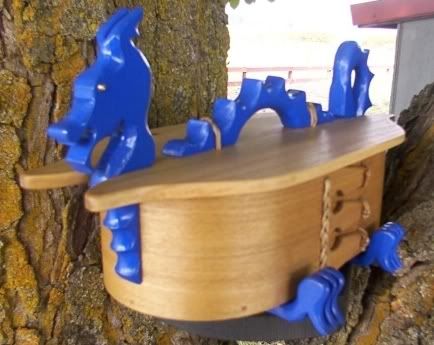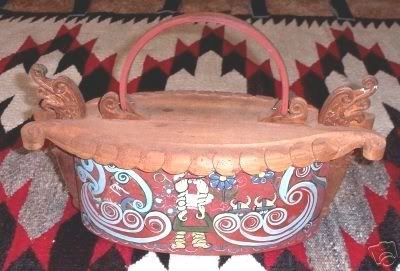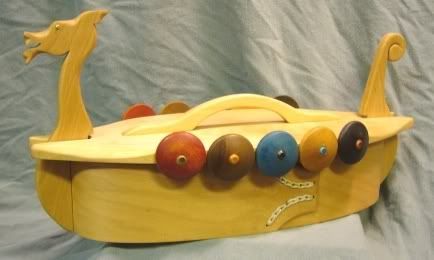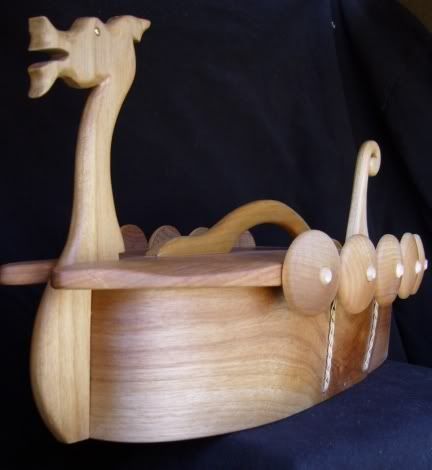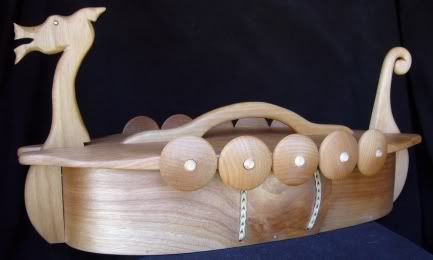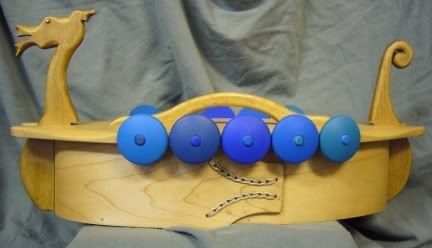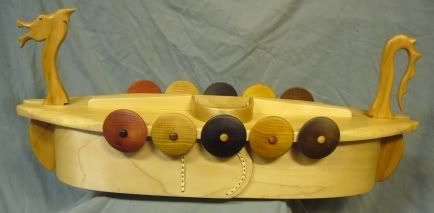Selecting a type of wood to bend is a crap shoot. I have had good luck with maple, birch, oak, ash, pine and poplar. Straight grain bends best but is not as interesting to look at.
No mater how hard you try, you will break some side pieces.
Measure the circumference of your form, allow for a 8 to 10cm overlap. This will be the length of your side.
The width should be the height of your form.
Thickens will be 3mm or a little less if you can do it. Thin wood bends easier.
Come up with a design for the overlap end. Look at the pictures of some of my tiner or get creative.
Boil the side piece for 20 minutes or more.
Have your form on the jig, strong backs close at hand and your clamp open a little wider than you will need.
Lift the side piece out of the pan with tongs. By the time you get to the jig it will be cool enough to handle.
Center the side on the back of the form. Pull forward and overlap the ends.
Place the strong backs front and back and apply the clamp loosely.
Grasp the side at the ends of the form and push in getting it as tight to the form as possible.
Tighten the clamp.
lift form and side off the jig and set aside to dry for two days.
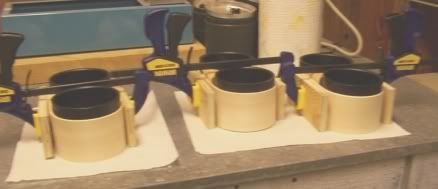
Remove the clamp and let dry another day.

Next post I will cover lacing the side overlap.
Harmony
No mater how hard you try, you will break some side pieces.
Measure the circumference of your form, allow for a 8 to 10cm overlap. This will be the length of your side.
The width should be the height of your form.
Thickens will be 3mm or a little less if you can do it. Thin wood bends easier.
Come up with a design for the overlap end. Look at the pictures of some of my tiner or get creative.
Boil the side piece for 20 minutes or more.
Have your form on the jig, strong backs close at hand and your clamp open a little wider than you will need.
Lift the side piece out of the pan with tongs. By the time you get to the jig it will be cool enough to handle.
Center the side on the back of the form. Pull forward and overlap the ends.
Place the strong backs front and back and apply the clamp loosely.
Grasp the side at the ends of the form and push in getting it as tight to the form as possible.
Tighten the clamp.
lift form and side off the jig and set aside to dry for two days.

Remove the clamp and let dry another day.

Next post I will cover lacing the side overlap.
Harmony

